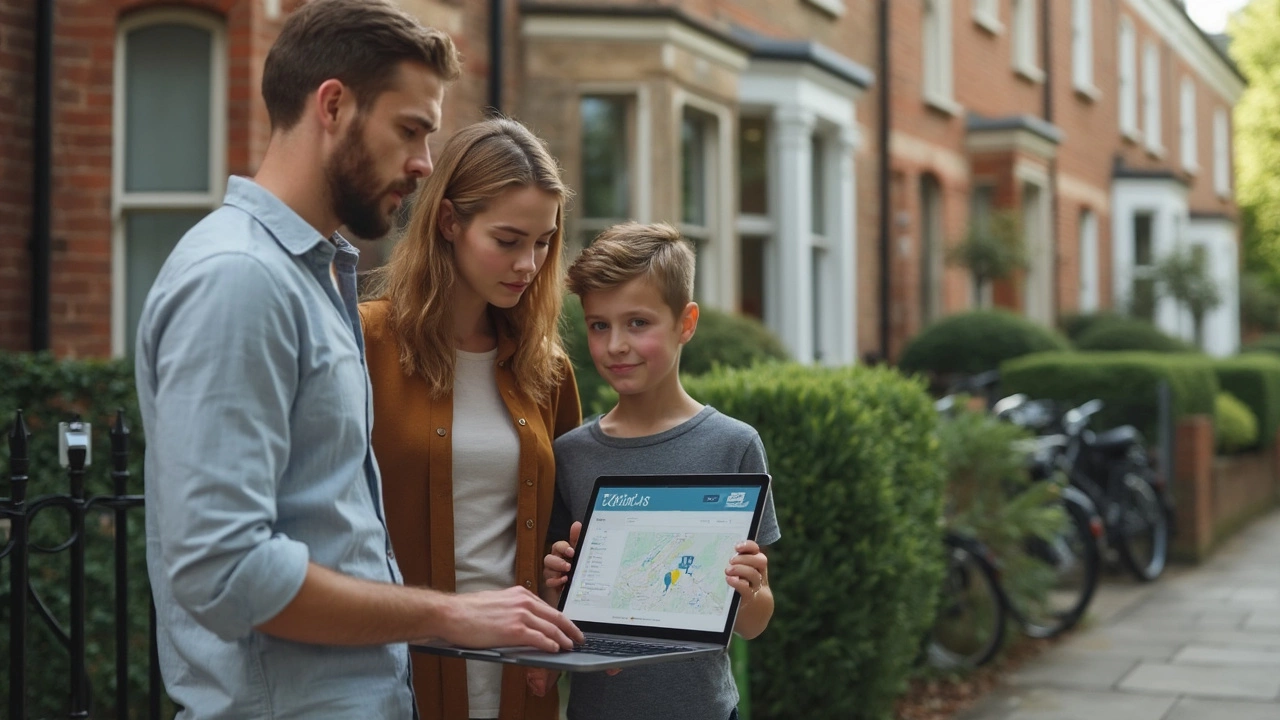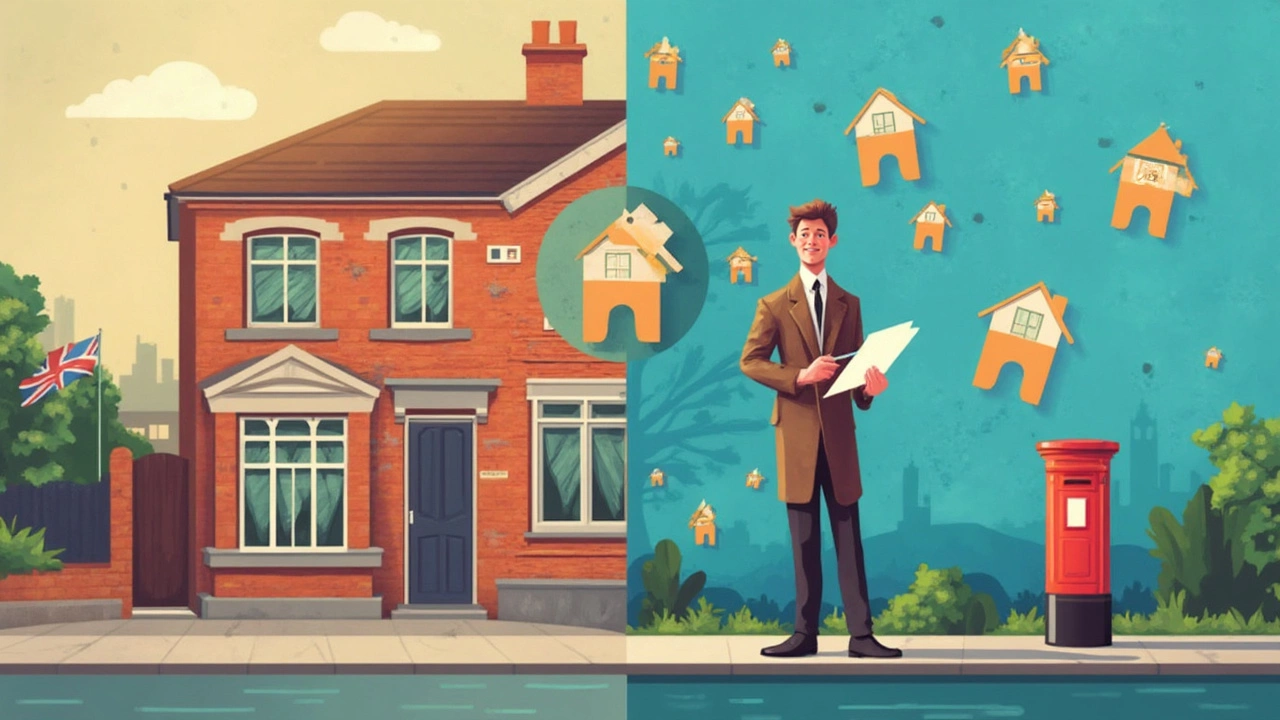Is a Zillow Estimate Accurate? What You Need to Know Before You Trust the Zestimate
 Apr, 23 2025
Apr, 23 2025
Scroll through homes online and it’s impossible to miss that little blue Zestimate box. Zillow’s estimate gets thrown around as if it’s gospel, but is it really as spot-on as everyone thinks? If you’re about to sell your house or simply want bragging rights at a barbecue, you probably want a real number you can count on.
Millions of people type in their address and let an algorithm spit out a value. But algorithms have blind spots. They don’t walk through your kitchen, smell your neighbor’s new puppy, or spot the leak in your basement. Trusting a Zestimate without a second glance could mean leaving big money on the table—or overpricing your house by a mile. Before you bank on that number, let’s get into how Zestimate works and if you can really trust what you see.
- What Is a Zestimate and How Does It Work?
- How Accurate Are Zillow Estimates in 2025?
- What Affects a Zestimate's Accuracy?
- When Should You Trust—or Ignore—the Zestimate?
- Tips for Getting a Reliable Home Value
What Is a Zestimate and How Does It Work?
Zestimate is Zillow’s own computer-generated guess at what a house is worth. It’s basically an online property valuation tool—a kind of ballpark figure for your home's price. When you pull up a home’s details on Zillow, you’ll see this number right at the top. People often call it a Zillow estimate or just “Zestimate.”
The way it works is all about data. Zillow grabs info from a bunch of sources:
- County and city tax records
- Past sales data
- Property details—like square footage, number of bedrooms and bathrooms
- Features pulled from listings (think, number of fireplaces, finished basements)
- Publicly available data and sometimes user-submitted updates
Then, it throws this huge pile of info into its algorithm. The algorithm compares your place to similar homes that have sold nearby (what real estate pros call “comps”). It runs through thousands of data points, trying to spot trends and patterns that suggest what your house could sell for right now.
Since 2019, Zillow claims they’ve made Zestimates even more detailed by pulling in 104 million homes’ worth of data. Their system gets updated regularly—some homes see daily updates, especially if there’s new public info, a price change, or recent sales nearby.
Curious how close the Zestimate usually is to the actual sales price? Zillow reports that, for homes on the market nationwide, the Zestimate comes within 2.5% of the final sales price half the time. Here’s a quick look at how Zestimates are updated and what factors are considered:
| Data Source | How It Affects the Zestimate |
|---|---|
| Recent Home Sales | Directly impacts algorithm—closer homes and recent dates are weighed more heavily |
| Public Records | Shapes property details, but can be out of date if no one updates them |
| Listing Updates | Can cause immediate Zestimate changes if new info appears, like remodels |
| User Corrections | Manual homeowner changes (bedrooms, renovations) can shift the value |
The Zestimate is quick and uses a ton of data, but keep in mind—it will never know if your house smells like fresh-baked cookies or sits next to a busy road. That part’s up to human eyes, not algorithms.
How Accurate Are Zillow Estimates in 2025?
This year, Zillow estimate accuracy is better than it was a decade ago, but it isn’t perfect. On average, Zillow says their Zestimates for homes on the market are within 2.5% of the final sale price. For homes not listed, the gap widens to about 7% according to Zillow’s 2025 data report. So if Zestimates says your place is worth $500,000, the real value could swing $12,500 either way if it’s listed, or as much as $35,000 off if it’s not.
But those are averages. In super-competitive markets like San Francisco or Dallas, numbers can get closer, but in quieter or rural areas, Zestimates can miss big time. Sometimes, the estimate is off by tens of thousands of dollars, especially if there's not much recent sales data nearby.
| Home Type | Median Error Listed (%) | Median Error Unlisted (%) |
|---|---|---|
| Single Family | 2.2 | 6.7 |
| Condo | 2.8 | 8.1 |
| Multi-family | 3.5 | 9.0 |
Why the gaps? Simple – Zestimates rely on public data like tax records, price history, and recent area sales. If this info is old, missing, or just plain wrong, the Zestimate accuracy drops. Local renovations, new schools, or street noise—none of that shows up in the math.
“Zestimates are a great starting point, but they should never be the last word in your home’s value,” according to Svenja Gudell, Zillow’s Chief Economist.
Real estate pros use Zestimates for a quick ballpark, not as the final say. If you’re banking on every dollar, getting a human appraiser or local agent is still the safest way to pin down your property’s true value.

What Affects a Zestimate's Accuracy?
Everyone checks their Zillow estimate, but not everyone realizes how easy it is for a Zestimate to miss the mark. The tool pulls data from public records, recent sales, tax assessments, and sometimes user-submitted details. If any piece of that puzzle is missing, outdated, or flat-out wrong, the number you see can be way off.
One major factor is the amount and quality of data in your area. If you’re in a spot where homes sell often and records stay updated, the Zestimate tends to be closer to reality. Rural towns or quirky historic neighborhoods? Not so much. In fact, Zillow itself reported a median error rate of about 2-3% for homes on the market nationwide in 2024, but for off-market homes the error rate jumps closer to 7% or more. That’s thousands of dollars up or down on your home value—sometimes for no clear reason.
Here’s a quick look at what throws off a Zestimate:
- Recent renovations or upgrades: If you’ve just put in a new kitchen but haven’t updated your home’s info online, Zestimate isn’t going to magically know your place is now worth more.
- Odd properties: Unusual floor plans or one-of-a-kind features never show up in the base data, so the Zestimate accuracy dips.
- Fast-changing markets: If prices in your neighborhood are shooting up—or crashing—the algorithm’s playing catch-up. It looks at past sales, not what buyers are willing to pay today.
- Incorrect public records: Mistakes at the county office, missing square footage, or the wrong number of bedrooms can all throw everything off.
- Owner input: You can claim your home on Zillow and add updates, but plenty of people never do. A lot of Zestimate issues come from missing details, not bad math.
Take a look at approximate error rates (from Zillow’s own public data):
| Property status | Median error rate |
|---|---|
| On-market homes | 2.0% to 3.0% |
| Off-market homes | 5.5% to 7.0% |
The point is, don’t just look at the Zestimate and assume it’s gospel. It’s not a crystal ball. It’s a mix of math, available info, and the big old guessing game that is local real estate. Want a more accurate property valuation? Make sure your home’s facts are up to date, and always use real market comparables to double check.
When Should You Trust—or Ignore—the Zestimate?
This is where it gets real—because the Zillow estimate isn’t a crystal ball. The Zestimate runs on public data and past sales, crunching numbers faster than any human ever could. If you live in a regular, cookie-cutter neighborhood where homes look and sell about the same, the Zestimate accuracy goes way up. Zillow’s own numbers admit it: for on-market homes in 2024, about 83% of Zestimates landed within 5% of the final sale price. Not bad for a quick online guess.
But let’s flip that. If your place is one-of-a-kind, maybe on a weird lot or with a killer remodel, the algorithm can miss the mark—sometimes by tens of thousands. Rural spots or areas where homes barely ever sell? The Zestimate deals mostly in guesswork there. That’s because it leans heavy on nearby sales (comparables), and if there aren’t any, it starts filling holes with less accurate info.
Here are times you can usually lean on the Zestimate:
- You live in a big suburban development with lots of recent sales nearby.
- Your home hasn’t had major renovations or changes that public records won’t pick up on.
- You just want a low-stress ballpark to start thinking about your home’s value—not make major money decisions.
But, consider ignoring—or at least fact checking—it when:
- Your house is unique for the area (think: converted firehouses, unusual additions, or historical homes).
- There were recent renovations, or something about your home doesn’t match the public record.
- You're in a market with low activity—rural areas or neighborhoods with very few recent sales.
- You need a really accurate number because you’re listing, buying, or refinancing soon.
For a little context, check out how the Zestimate stacks up in different scenarios:
| Situation | Trust Level | Why? |
|---|---|---|
| Suburban tract home with many sales | High | Lots of comparable data for the home value algorithm |
| Downtown condo, similar units | Medium–High | Condos in one building usually sell close together, easy for Zestimate to track |
| Custom home in rural town | Low | Hardly any sales, unique features confuse the property valuation model |
| Recently renovated property | Low–Medium | Public records are slow to update, Zestimate misses your upgrades |
Bottom line: the Zestimate is a useful kickoff, especially for browsing, but don’t bet your biggest money decisions on it. Gut-check its number with a real human who knows the area or use other real estate tools for a better picture.

Tips for Getting a Reliable Home Value
Don’t stop at a Zillow estimate if you want the real scoop on your home’s value. Sure, Zestimates are a good starting point, but you’ll want to dig deeper before making big decisions. Here’s how you can get the most accurate read.
- Use Comparative Market Analysis (CMA): Ask a local real estate agent for a CMA. Agents pull sales data for homes like yours—and recent ones, too. This is what seasoned agents look at to price homes right in your neighborhood.
- Order a Licensed Appraisal: If you need a figure that’ll hold up with banks or buyers, hire a licensed appraiser. They visit your house, factor in extras like renovations, and analyze local market trends. Lenders always trust an appraisal over an online estimate.
- Check Competing Listings: See what homes around you are listed for and—more importantly—what they actually sell for. So many sellers anchor on asking prices, but it’s the final sale price that matters for valuation.
- Inspect Condition and Upgrades: The Zestimate often misses new kitchens, fancy decks, or even big repairs. Make a list of upgrades and do a side-by-side check with similar homes that sold recently.
- Look at Multiple Online Tools: Don’t stick to just one. Try Redfin, Realtor.com, or Chase’s home value estimator. Calculate the average, and watch out for huge gaps—if three sites say $400K and one says $550K, something’s off.
Here’s how online estimates compare against appraised values in recent years:
| Tool | Average Error | Updated |
|---|---|---|
| Zillow Zestimate | 2.4% (on-market) | 2024 |
| Redfin Estimate | 2.1% (on-market) | 2024 |
| Licensed Appraisal | <1% (used for lending) | 2024 |
Ideally, combine a couple of these steps so you’re not flying blind. It’s smart to challenge the numbers a bit—especially if there’s real money at stake.